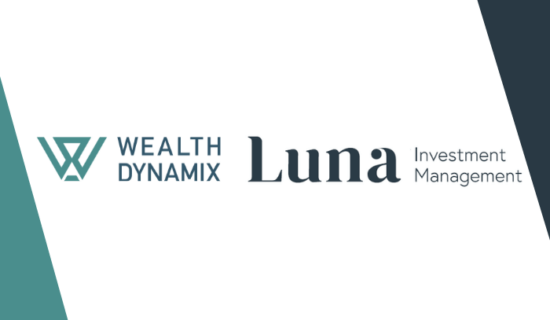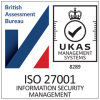Digitisation has become prevalent, an expectation even! Many wealth managers now find themselves scrambling to adapt to this changing environment in a bid to remain competitive and retain clients.
Aside from the general growth of demand for digital empowerment across the world, the wealth management industry specifically faces an increased drive towards digitisation as significant wealth is transferred to the second generation of younger, digitally native millennials and generation-Zs. Post-covid, ‘digital adoption has taken a quantum leap’, according to McKinsey.
One such change that clearly reflects this trend in the wealth management industry is the growing popularity of a hybrid servicing model which incorporates digital tools to drive interactions.
The hybrid wealth management model incorporates the best components of both digitisation and human-based financial advisory. It digitally empowers wealth management clients, providing them with omnichannel communication services to reach out to their bankers for advisory services, and even allows them to submit requests, forms, evidence, and even transactional instructions via a completely digital platform at their fingertips. Wealth management clients can enjoy greater convenience and access their portfolio and view live-time updates on their digital platform any place, any time.
“It is without a doubt that a hybrid model is a step towards satisfying the demand for digital empowerment of wealth management clients. At the same time, firms may even find themselves benefitting from greater efficiencies in both operational and front-line processes as the hybrid model encourages the scalability of the business.”
However, while wealth managers race to churn out new innovations to meet clients’ changing demands, they also face the rising challenge of a stricter regulatory environment. Compliance requirements have become more onerous and regulatory scrutiny become stricter. As such, it is of extreme importance for wealth managers to strike the balance of ensuring compliance alongside the need to fulfil clients’ digital demands, to avoid adverse impact on the firm’s reputation or the risk of hefty regulatory fines.
How to ensure compliance in a hybrid wealth management model
There may be many ways in which a wealth management business ensures the digital functionality of its hybrid model is compliant. In this article, we will focus on three features that should be embedded in the hybrid model solution to ensure greater compliance with regulatory requirements.
1. Auditable logs and tracked interactions
The first step in ensuring and being able to demonstrate compliance for an omni-channel communication feature is that all interactions within the digital solution must be able to be logged, tracked, and audited. This includes conversations that clients may have with their private bankers on the omni-channel communication platform, or selections and instructions submitted by the client on the platform. Especially when it comes to updating client profile information such as KYC or risk profile selections, the time of input and selection changes should be logged for future audit purposes. This would be the most basic and necessary first step in demonstrating compliance and being able to provide the information to regulators as and when necessary.
2. Connected to real-time client data throughout the client lifecycle
While the core of a hybrid model is intrinsically client-experience driven, the long-term result of such a movement will ultimately have a significant impact on the role of the relationship manager. As digital allows simple transactions to be automated and done with a simple click of a button, relationship managers will find themselves moving from the role of transaction facilitators, and more into that of trusted advisers. As such, while we look to digitally empower clients with the hybrid model, it is equally as important to arm your relationship managers with the digital tools to be able to do their job in a compliant and efficient manner.
One way to do so is for the hybrid solution to be integrated with a client 360 view where the relationship manager should be able to see all required client data at their fingertips. This includes the client’s suitability, AML, KYC, risk levels and even dynamic information such as current location. This is so that the relationship manager would be able to view the client’s latest information and provide suitable advice that is relevant and compliant with regulations when necessary. Information should also always be consistent across both what users and the client can see – in the most ideal case, all information should be from a single source of truth that only requires to be keyed in once and reused consistently across the solution and for all users.
3. Quality systemic controls with end-to-end digital workflows
An ideal hybrid experience allows the client to start multiple processes (transactions, updating of details, transferring of funds etc) from the digital solution. This is different from the traditional banking model where the client would have to inform the relationship manager, who will then trigger the start of this process. It is crucial to ensure that, even with this change of entry point, the rest of the process continues to be compliant with sufficient controls embedded.
For example, when the client submits an instruction to invest in a particular high-risk product that is above the client’s risk level, the solution should be able to do the necessary pre-checks to reject the transaction and trigger a notification to the client on the reason for rejection.
Integration of a client portal to a client lifecycle management solution such as Wealth Dynamix can effectively bake the nuances of your internal policies and interpretation of regulations into your processes and workflows. Pre-checks of simple workflows such as funding of accounts can be automated, while more complex cases should be automatically escalated and bought to the attention of the relevant party (such as compliance, or manager role).
It’s time for wealth management businesses to embrace new technologies that deliver for them as competently as the client. For greater assurance of a compliant hybrid model which meets the demands of the client, it is best to integrate it along with an end-to-end client lifecycle solution that provides auditable logs, a full client 360 view, and fully digitised workflows which embedded the firm’s interpretation of regulation and reflect the best practice of internal policies.
In a context within which ‘89% of investors say their preferred channel will be mobile apps within 2 years’ and 34% of investors say they are likely to transfer 20% or more of their assets within the same period simply to get ‘a better digital experience’, firms cannot afford to lose sight of the importance of digitisation to their long-term sustainability.





